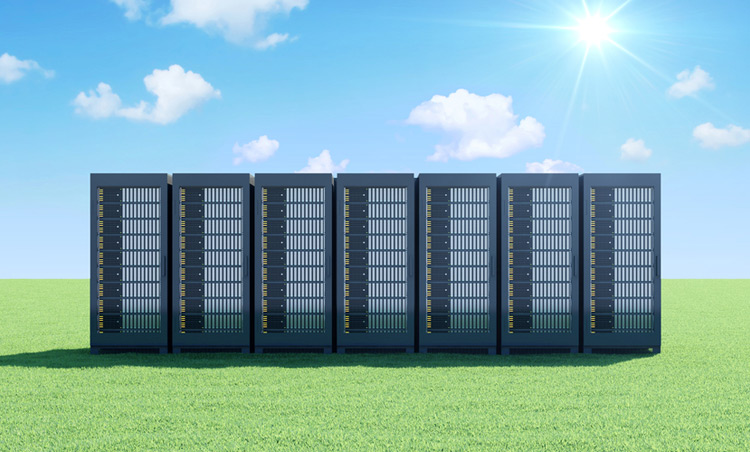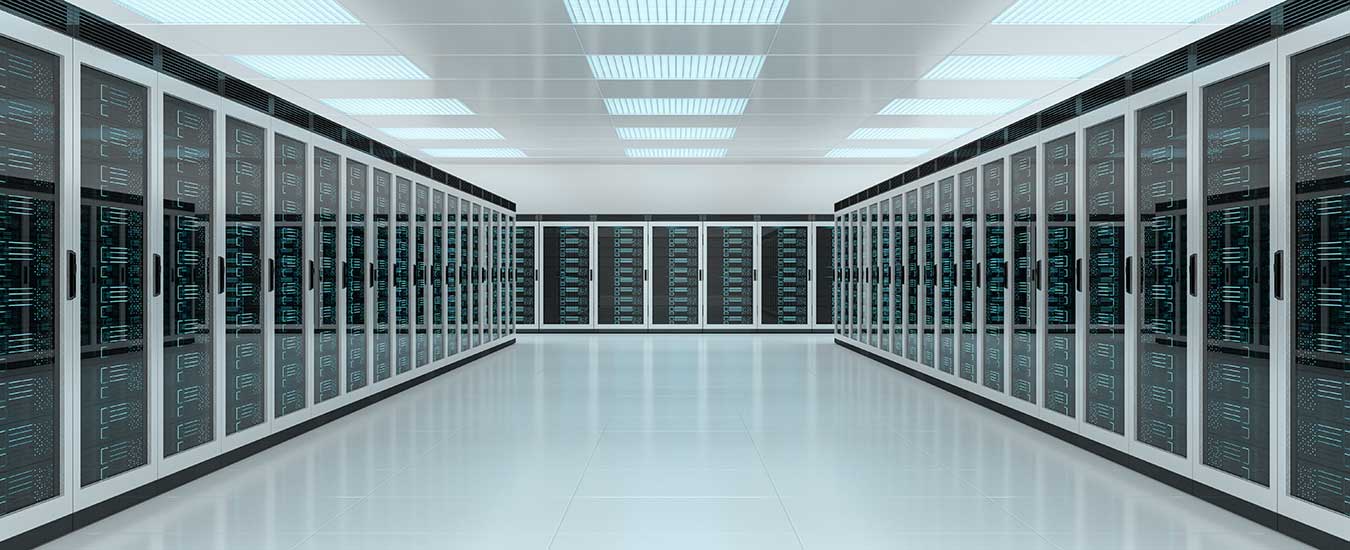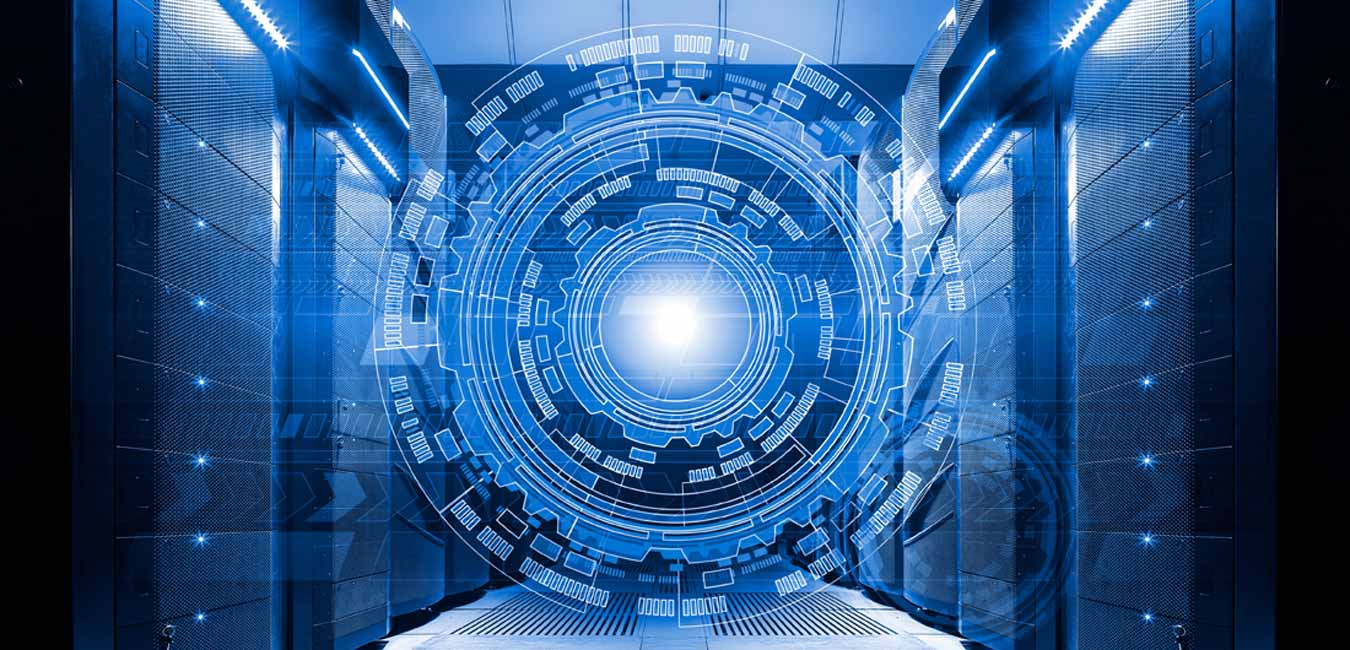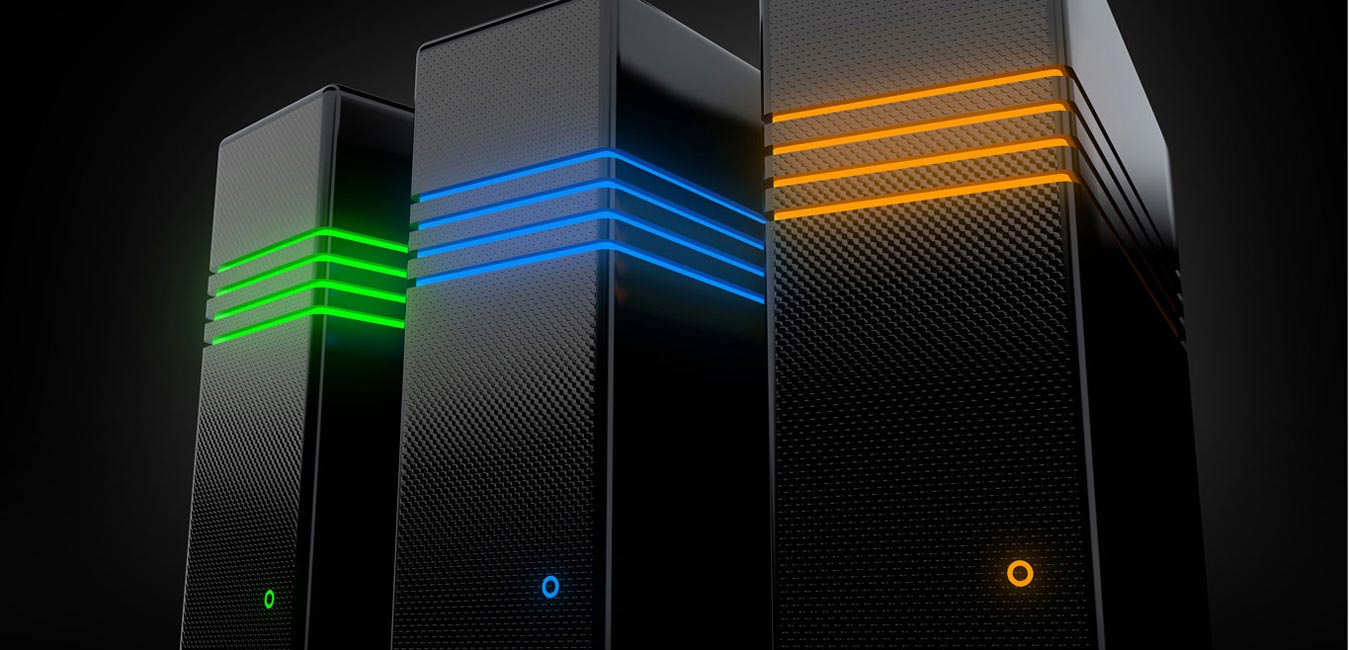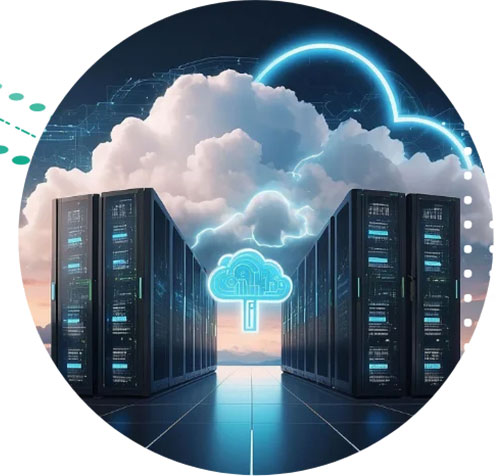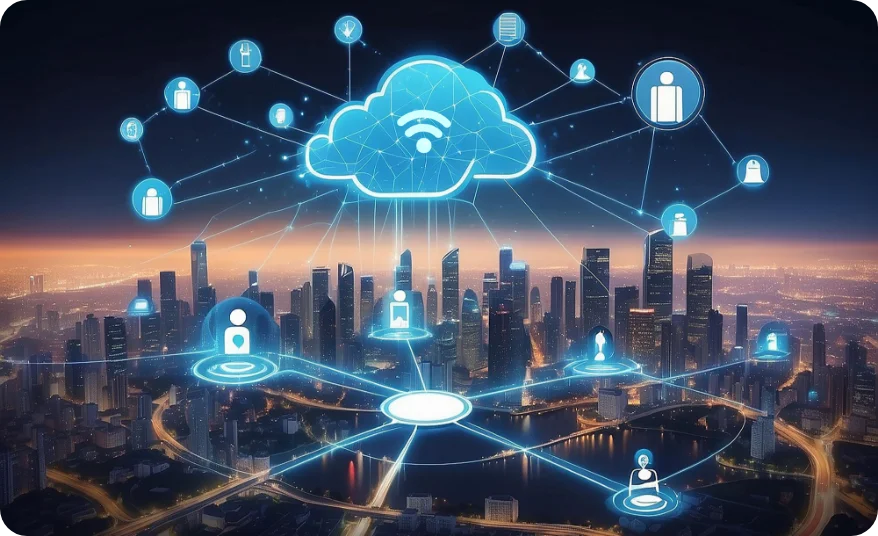Sustainable Green Data Centers: How to Build Green IT Infrastructures
The rapid growth of enterprise data centers in India has led to an increasing focus on the concept of green data centers. Many businesses are now opting for alternative energy solutions for their data centers, as they offer numerous benefits. One key advantage is energy savings, which leads to cost reductions for businesses. Green data centers also contribute to environmental sustainability by reducing carbon emissions and optimizing the use of natural resources.
Comparing India’s data statistics to global figures as of 2021, India represents 18% of the global population but has lower Internet penetration, e-commerce shopping, social media users, and mobile subscribers, all at 14%. However, India’s total mobile data traffic is significant at 113 EB, and total media traffic is 588 EB. Currently, there are 138 operational data centers in India, utilizing 737 MW power. Over the next 3-4 years, an additional 50 data centers are expected to be established, resulting in a power demand of 1050 MW. In the next 7 years, the data center consumption is projected to exceed 3000 MW of IT load demand.
This level of enormous upcoming “data center capacity” has resulted in a significant increase in the volume of energy consumption by data centers, which can have a lasting impact on the environment, and finally result in climate change.
To solve this issue, the concept of sustainable data centers has come out to reduce the environmental impact of data centers while still meeting the growing demand for digital services. As per the Green Data Center Global Market Report 2023, the global green data center market is expected to grow to $139.93 billion in 2027 at a CAGR of 19.6% for the forecasted period 2023-2027.
With this, let’s deep dive into understanding sustainable data centers, advantages of green data centers, and how to build sustainable data centers.
What Are Sustainable Data Centers?
Simply put, a sustainable data center or a green energy data center is designed and operated with a focus on environmental and social sustainability.
- Sustainability in data centers involves the implementation of a variety of practices, such as the use of renewable sources of energy like solar or wind power.
- Green data centers also help optimize energy use through efficient cooling and lighting systems, reducing water usage, and utilizing eco-friendly building materials and technologies. Green data centers also help in promoting responsible waste management practices.
Sustainable data centers strive to balance their operational needs with environmental responsibility, making significant efforts to reduce energy consumption, greenhouse gas emissions, and water usage while promoting the adoption of renewable energy sources.
Advantages of Green Data Centers
Eco-friendly data centers are crucial for reducing the environmental impact of the IT industry in India. Building sustainable data centers demonstrates a company’s commitment to sustainability and corporate social responsibility. Here are a few benefits of Green Data Centers:
- Energy Efficiency: Green data centers employ various technologies and practices to optimize energy usage. They use energy-efficient servers, cooling systems, and power distribution mechanisms, reducing overall electricity consumption and carbon emissions.
- Reduced Carbon Footprint: Green data centers emit fewer greenhouse gases compared to traditional data centers. By adopting sustainable practices, they help combat climate change and contribute to global efforts to reduce carbon emissions.
- Renewable Energy Integration: Many green data centers rely on renewable energy sources such as solar, wind, hydroelectric, or geothermal power. By harnessing clean energy, these centers decrease their reliance on fossil fuels and contribute to a lower carbon footprint.
- Compliance With Environmental Regulations: Green data center solutions help companies comply with stringent government regulations aimed at reducing carbon emissions and promoting sustainability.
- Cost Savings: Green energy data centers offer economic advantages by reducing energy costs and improving overall efficiency. Through energy efficiency and the use of renewable energy sources, green data centers can significantly lower operational costs. Over time, these savings can be substantial and may offset the initial investment in green technologies.
- Enhanced Corporate Social Responsibility (CSR): Companies that invest in green data centers demonstrate their commitment to sustainability and environmental responsibility. This can boost their reputation and appeal to environmentally conscious customers and partners.
- Longer Equipment Lifespan: Green data centers often prioritize the use of high-quality, energy-efficient hardware. This can lead to longer lifespans for servers and other equipment, reducing electronic waste and the need for frequent replacements.
- Resilience and Disaster Recovery: Most green data centers are built with redundancy and resilience in mind, reducing the risk of data loss during power outages or other emergencies. This ensures critical data remains accessible and secure.
- Leadership and Competitive Advantage: By adopting green practices, companies can position themselves as industry leaders in sustainability. This can lead to a competitive advantage as customers and investors increasingly prioritize environmentally responsible organizations.
How to Build Sustainable Data Centers?
To build sustainable data centers, companies must adopt a range of proven strategies and technologies that minimize their IT infrastructure’s environmental impact, maximize energy efficiency, and reduce carbon emissions.
- Upgrade to New Equipment: While regular maintenance and repairs can improve equipment functionality, over time, equipment becomes less reliable and more expensive to maintain. Hence, data center companies must invest in good-quality, cost-friendly data center equipment, procured from a reputed vendor. It is more advantageous in the long run to avoid the costly risk of data center downtime caused by aging and faulty equipment.
- Optimize Energy Efficiency: The first step in optimizing energy efficiency is to choose energy-efficient hardware. Proper hardware and software configuration, such as implementing power management features, is also essential for optimizing energy efficiency. Data centers must accurately measure the consumption of energy in real time and create timely alerts to keep a check on energy usage, in order to optimize energy efficiency. Identifying alternate sources of energy also helps in optimizing energy efficiency.
- Intelligent Power Management: Managing power prudently can help optimize power usage and increase energy efficiency. Through intelligent power management, predictive analytics, and efficient data center infrastructure management, a data center can maximize resource utilization, minimize energy waste, and enhance overall sustainability. Intelligent monitoring, control, and allocation of power resources within a data center infrastructure can help boost the recovery time of devices that are managed remotely.
- Virtualization: Virtualization allows multiple virtual servers to run on a single physical server in a data center, which helps to optimize energy efficiency and reduce the environmental impact of multiple physical data centers. This not only improves data center resiliency but also makes a data center more sustainable.
- Using Renewable Energy Sources: Another way to reduce carbon emissions and improve sustainability is incorporating renewable energy sources into data center operations. It can involve various mechanisms like installing solar panels, wind turbines, or hydroelectric generators. Data centers can also invest in off-site renewable energy projects, such as wind or solar farms, that can offset their energy consumption.
- Modern Cooling Systems: Several strategies to improve cooling efficiency include using free cooling systems that use outside air to cool a data center instead of traditional air conditioning. Another option is liquid cooling, which uses a liquid coolant to directly cool server components. Installing efficient airflow management mechanisms improves the effectiveness of cooling systems and reduce energy usage. Optimizing airflow is a great way to ensure sustainability and reduce operational costs in data centers.
- Implementing Automation: Automated power management tools can optimize system settings for maximum energy efficiency. Several practices, such as turning off unused devices or putting servers into low-power states during periods of low usage, can improve energy efficiency. Sustainable data centers use software-based smart design principles to optimize energy efficiency and reduce environmental impact.
- Conduct Regular Energy Audits: Regularly monitoring and assessing energy usage and carbon emissions is essential for identifying areas for improvement and ensuring data centers remain as energy efficient as possible. Conducting energy audits can provide deeper insights into energy usage patterns, identify areas for improvement, and help prioritize energy-saving initiatives.
Meeting Data Center Sustainability KPIs
Measuring and monitoring sustainability performance through Key Performance Indicators (KPIs) is essential for data centers to assess their environmental impact, measure progress, and undergo continuous improvement. Some of these KPIs include:
- Power Usage Effectiveness (PUE)
- Water Usage Effectiveness (WUE)
- Carbon Usage Effectiveness (CUE)
- Server Utilization
- Recycling and Waste Management
- Greenhouse Gas Emissions
- Compliance with Sustainability Standards
Going Green With Sify Data Centers
With over two decades of thought leadership in IT infrastructure, Sify has been delivering transformative business value to enterprises across the globe. Sify provides carbon-neutral and energy-efficient data centers by incorporating renewable energy sources, optimizing power utilization, offsetting carbon emissions, and automation through AI/ML. While ensuring sustainability, we offer high-efficiency equipment that complies with green practices like adhering to ASHRAE guidelines, implementing a carbon abatement policy, and ISO 14001 Environmental Certification.
In 2022, Sify Technologies made a commitment to renewable energy for its data center business in India. We have made power purchase agreements (PPAs) with Vibrant Energy Holdings, a majority-owned subsidiary of Blue Leaf Energy Asia Pte. Ltd. Having contracted over 230 MW of green power, Sify is successfully making progress in reducing its customers Power Usage Effectiveness (PUE) and Water Usage Effectiveness (WUE)
Wrapping up!
To build a zero-carbon data center, one must follow a holistic approach that considers the entire lifecycle of the data center, right from the design and construction to ongoing operations and maintenance. By implementing a range of strategies and technologies that optimize energy efficiency and reduce carbon emissions, data center operators can build green IT infrastructures that are environmentally friendly and economically sustainable.
Learn more about Sify green data centers now!
From Legacy to the Modern-day Data Center Cooling Systems
Modern-day Data Centers provide massive computational capabilities while having a smaller footprint. This poses a significant challenge for keeping the Data Center cool, since more transistors in computer chips, means more heat dissipation, which requires greater cooling. Thereby, it has come to a point where traditional cooling systems are no longer adequate for modern Data Center cooling.
Legacy Cooling: Most Data Centers still use legacy cooling systems. They use raised floors to deliver cold air to Data Center servers, and this comes from Computer Room Air Conditioner (CRAC) units. These Data Centers use perforated tiles to allow cold air to leave from the plenum to enter the main area near the servers. Once this air passes through the server units, heated air is then returned to the CRAC unit for cooling. CRAC units have humidifiers to produce steam for running fans for cooling. Hence, they also ensure the required humidity conditions.
However, as room dimensions increased in modern Data Centers, legacy cooling systems become inadequate. These Data Centers need additional cooling systems besides the CRAC unit. Here is a list of techniques and methods used for modern Data Center cooling.
Server Cooling: Heat generated by the servers are absorbed and drawn away using a combination of fans, heat sinks, pipes within ITE (Information Technology Equipment) units.1 Sometimes, a server immersion cooling system may also be used for enhanced heat transfer.
Space Cooling: The overall heat generated within a Data Center is also transferred to air and then into a liquid form using the CRAC unit.
Heat Rejection: Heat rejection is an integral part of the overall cooling process. The heat taken from the server is displaced using CRAC units, CRAH (Computer Room Air Handler) units, split systems, airside economization, direct evaporative cooling and indirect evaporative cooling systems. An economizing cooling system turns off the refrigerant cycle drawing air from outside into the Data Center so that the inside air can get mixed with the outside air to create a balance. Evaporated water is used by these systems to supplement this process by absorbing energy into chilled water and then lowering the bulb temperature to match the temperature of the air.
Containments: Hot and cold aisle containment use air handlers to contain cool or hot air and let the remaining air out. A hot containment would contain hot exhaust air and let cooler air out while cold containment would do vice versa.3 Many new Data Centers use hot aisle containment which is considered as a more flexible cooling solution as it can meet the demands of increased density of systems.
Closed-Couple cooling: Closed-Couple Cooling or CCC includes above-rack, in-rack or rear-door heat exchanger systems. It involves bringing the cooling system closer to the server racks itself for enhanced heat-exchange.2 This technology is very effective as well as flexible with long-term provisions but requires significant investments.
Conclusion
Companies can choose a cooling system based on the cooling needs, infrastructure density, uptime needs, space factors, and cost factors. The choice of the right cooling system becomes critical when the Data Center needs to have high uptime and avoid any downtime due to energy issues.
Sify offers state of the art Data Centers to ensure the highest levels of availability, security, and connectivity for your IT infra. Our Data Centers are strategically located in different seismic zones across India, with highly redundant power and cooling systems that meet and even exceed the industry’s highest standards.
How Data Center works (and how they’re changing)
A Data Center is usually a physical location in which enterprises store their data as well as other applications crucial to the functioning of their organization. Most often these Data Centers store a majority of the IT equipment – this includes routers, servers, networking switches, storage subsystems, firewalls, and any extraneous equipment which is employed. A Data Center typically also includes appropriate infrastructure which facilitates storage of this order; this often includes electrical switching, backup generators, ventilation and other cooling systems, uninterruptible power supplies, and more. This obviously translates into a physical space in which these provisions can be stored and which is also sufficiently secure.
But while Data Centers are often thought of as occupying only one physical location, in reality they can also be dispersed over several physical locations or be based on a cloud hosting service, in which case their physical location becomes all but negligible. Data Centers too, much like any technology, are going through constant innovation and development. As a result of this, there is no one rigid definition of what a Data Center is, no all-encompassing way to imagine what they are in theory and what they should look like on the ground.
A lot of businesses these days operate from multiple locations at the same time or have remote operations set up. To meet the needs of these businesses, their Data Centers will have to grow and learn with them – the reliance is not so much on physical locations anymore as it is on remotely accessible servers and cloud-based networks. Because the businesses themselves are distributed and ever-changing, the need of the hour is for Data Centers to be the same: scalable as well as open to movement.
And so, new key technologies are being developed to make sure that Data Centers can cater to the requirements of a digital enterprise. These technologies include –
- Public Clouds
- Hyper converged infrastructure
- GPU Computing
- Micro segmentation
- Non-volatile memory express
Public Clouds
Businesses have always had the option of building a Data Center of their own, to do which they could either use a managed service partner or a hosting vendor. While this shifted the ownership as well as the economic burden of running a Data Center entirely, it couldn’t have as much of a drastic effect to due to the time it took to manage these processes. With the rise of cloud-based Data Centers, businesses now have the option of having a virtual Data Center in the cloud without the waiting time or the inconvenience of having to physically reach a location.
Hyper converged infrastructure
What hyper converged infrastructure (HCI) does is simple: it takes out the effort involved in deploying appliances. Impressively, it does so without disrupting the already ongoing processes, beginning from the level of the servers, all the way to IT operations. This appliance provided by HCI is easy to deploy and is based on commodity hardware which can scale simply by adding more nodes. While early uses that HCI found revolved around desktop virtualization, recently it has grown to being helpful in other business applications involving databases as well as unified communications.
GPU Computing
While most computing has so far been done using Central Processing Units (CPUs), the expansive fields of machine learning and IoT have placed a new responsibility on Graphics Processing Units (GPUs). GPUs were originally used only to play graphics-intensive games, but are now being used for other purposes as well. They operate fundamentally differently from CPUs as they can process several different threads in tandem, and this makes them ideal for a new generation of Data Centers.
Micro segmentation
Micro segmentation is a method through which secure zones are created in a Data Center, curtailing any problems which may arise through any intrusive traffic which bypasses firewalls or. It is done primarily through and in software, so it doesn’t take long to implement. This happens because all the resources in one place can be isolated from each other in such a way that if a breach does happen, the damage is immediately mitigated. Micro segmentation is typically done in software, making it very agile.
Non-volatile memory express
The breakneck speed at which everything is getting digitized these days is a definitive indication that data needs to move faster as well! While older storage protocols like Advanced Technology Attachment (ATA) and the small computer system interface (SCSI) have been been impacting technology since time immemorial, a new technology called Non-volatile memory express (NVMe) is threatening their presence. As a storage protocol, NVMe can accelerate the rate at which information is transferred between solid state drives and any corresponding systems. In doing so, they greatly improve data transfer rates.
The future is here!
It is no secret that Data Centers are an essential part of the success of all businesses, regardless of their size or their industry. And this is only going to play a more and more important factor as time progresses. A radical technological shift is currently underway: it is bound to change the way a Data Center is conceptualized as well as actualized. What remains to be seen is which of these technologies will take center stage in the years to come.
Reliable and affordable connectivity to leverage your Data Center and Cloud investments
To know more about Sify’s Hyper Cloud Connected Data Centers – a Cloud Cover connects 45 Data Centers, 6 belonging to Sify and 39 other Data Centers, on a high-speed network…
5 Cool Features of the Next Generation Data Center
The relentless growth in the volume of data created every day, has compelled Data Center administrators to integrate new technologies and processes. With the global popularity of cloud computing, the role of Data Centers has extended beyond providing enough storage capacity with data security. Data Centers – optimized with various tools and services, are now transformed into strategic business assets. Here are five cool features of next generation Data Centers.
Software Defined Data Centers (SDDC)
In IT, everything is literally virtualized and delivered as a service. And the virtualization of Data Centers is the next logical step. The virtual layer is taking over in Data Centers, making them flexible, highly secure and extremely agile. Infrastructure and network, both are not just virtualized in a software defined Data Center but are delivered as a service also. Many mainstream mega-scale Data Centers are moving forward to gain edge with software-defined Data Centers.
Data Center Operating Systems (DCOS)
Data Centers have a diversified need for an extended control layer and the interconnectivity in Data Centers depend upon Data Center management. Many providers deploy Data Center operating control layers that manage resources, users and virtual machines to meet the needs of improving scalability of management infrastructure. Aiming at greater scalability, Data Centers are now better equipped for controlling various crucial components ranging from chips to cooling systems. The DCOS layer has considerably enhanced infrastructure due to its integration into every critical aspect of every Data Center.
Infrastructure Optimization with Agnostic Data Center
The next generation Data Centers will have layered management tools that can pool resources logically as per required workloads. This kind of infrastructure will only be obtained with an agnostic Data Center that lets admin to create more powerful and scalable cloud platforms. The Data Center will become much more abstract and with infrastructure optimization, vendor lockdown can be prevented. Moreover, administrators get to manage traffic influx while leveraging hardware and software optimization. In future Data Centers, what will matter is that you smoothly present resources to the management layer irrespective of the kind of hardware deployed, enabling clients to integrate with outside technologies, flawlessly.
Better Control Layers
Each Data Center hosts a diverse variety of systems. Therefore, the control layer also needs to be greatly diversified. And since the management console integrates into APIs, it can grow exponentially to keep pace with the increasing Data Center footprint. The new-age Data Centers allow API integrated management consoles to render the big data clout, manipulation and management along with allocation of resources. Furthermore, you can even vie for better multi-tenancy options and optimum cloud scaling by embracing API integrated networking technologies.
Greater Logical and Physical Automation
With the continuous enterprise popularity of cloud computing, vendors lose sleep over supplying application performance and predictability. It is not easy to achieve a fully functional, automated Data Center environment. Hence, introduction of robots in Data Centers will be one of the most basic features of next generation Data Centers. It will provision the resources more actively.




